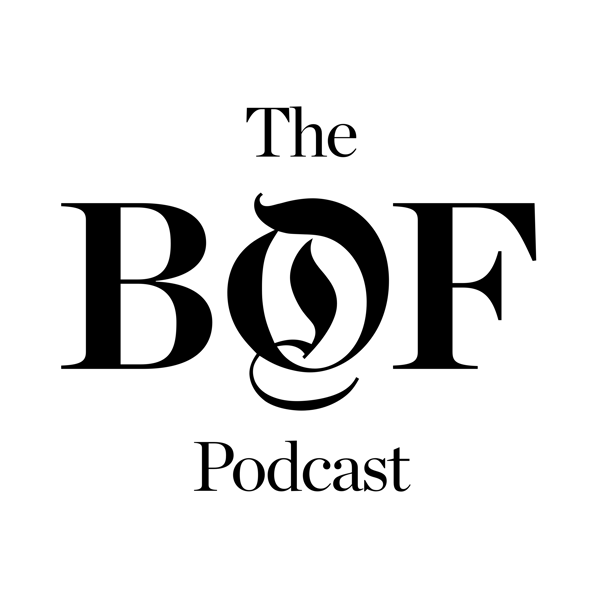Three Designers In Search of Digital Beauty
The Business of Fashion Podcast
The Business of Fashion
4.6 • 770 Ratings
🗓️ 26 February 2021
⏱️ 39 minutes
🧾️ Download transcript
Summary
This week on The BoF Podcast, editor-in-chief Imran Amed speaks with Saul Nash, Stephen Jones and Roksanda Ilinčić about how to tell compelling fashion stories amid the pandemic.
Another season of mostly virtual fashion weeks have helped fashion films to become an increasingly popular tool for designers to create an elaborate narrative out of their collections off the catwalk. These new, online-first presentations have forced designers to think creatively and push storytelling further in order to emotionally connect with audiences.
But as with any emerging phenomenon, there’s still much to learn. In the latest episode of the BoF Podcast, designers Saul Nash, Stephen Jones and Roksanda Ilinčić, and BoF editor-at-large Tim Blanks, delve into the dynamics of digital comunication and how to stand out with a meaningful story.
To subscribe to The BoF Podcast, please follow this link
Join BoF Professional for the analysis and advice you need. Get 30 days for just $1 or explore group subscriptions for your business.
Related Articles: London’s Creativity Lights Up Dark Times Stephen Jones Says the Constant Quest for Perfection Often Kills Spontaneity Roksanda and Richard Quinn Bring Art to Their Fashion
Hosted on Acast. See acast.com/privacy for more information.
Transcript
Click on a timestamp to play from that location
| 0:00.0 | Hi, this is Imran Ahmed, founder and CEO of the Business of Fashion. Welcome to the Bof |
| 0:08.1 | podcast. It's Friday, February 26th. Since the onset of the coronavirus pandemic, video has emerged |
| 0:15.2 | as the predominant medium for telling stories during Fashion Week, with many designers using short films to share their |
| 0:22.1 | collections. But the fashion film is not new. It was an idea that was first popularized by the |
| 0:27.2 | British photographer Nick Knight. Ten years ago, I had the opportunity to interview Nick for |
| 0:32.7 | the 10th anniversary of show studio, his pioneering digital platform for fashion. Nick spoke passionately |
| 0:39.5 | about film as the ideal medium for communicating fashion. Clothes are designed to be seen in |
| 0:45.4 | movement. So when a fashion designer John Galliano, whoever creates a piece of clothing, it's to be seen in |
| 0:50.8 | movement. Someone can argue that I still photograph of that piece of clothing is to some degree a compromise |
| 0:55.0 | of the designer's original vision. |
| 0:57.0 | I think fashion is actually very poorly served by the media. |
| 0:59.0 | I think the media don't represent it well, especially here in Britain. |
| 1:02.0 | I think it's either trivialized or scandalized. |
| 1:04.0 | And the fashion world that I knew was a lot more exciting than that. Working with a designer like Yojiamoto, you see a world which |
| 1:11.1 | is quite incredible, quite poetic and artistically super interesting. And I felt that that wasn't |
| 1:16.3 | getting shown. So really to all the show show show you was to do is just like, look, if I can |
| 1:21.9 | have somewhere where I can talk about what I'm doing and show what I'm doing as I'm doing it, |
| 1:25.5 | allow people into that world, then that's, you know, they'll get, a better understanding of the art of fashion or fashion as an |
| 1:31.5 | art form, and B, they'll see that it's really exciting and really a very creative and very |
| 1:36.6 | fulfilling medium. There's been such a massive sea change in the last 30 years I've been working, |
| 1:41.8 | I mean, massive. And I think really it's a question that when I started a showtseyed, |
| 1:45.0 | it felt a bit like being the first person in the sweet shop |
... |
Please login to see the full transcript.
Disclaimer: The podcast and artwork embedded on this page are from The Business of Fashion, and are the property of its owner and not affiliated with or endorsed by Tapesearch.
Generated transcripts are the property of The Business of Fashion and are distributed freely under the Fair Use doctrine. Transcripts generated by Tapesearch are not guaranteed to be accurate.
Copyright © Tapesearch 2025.

